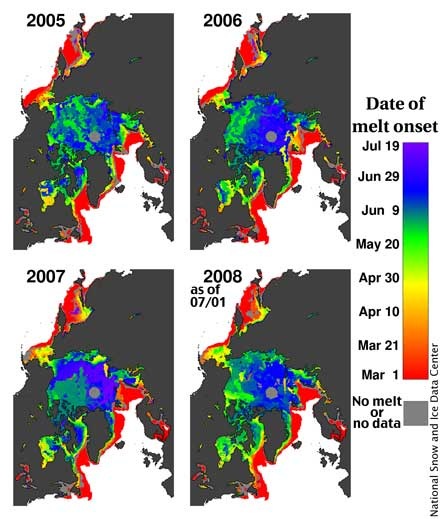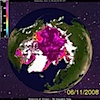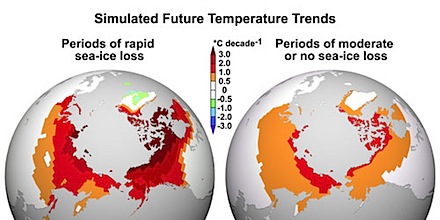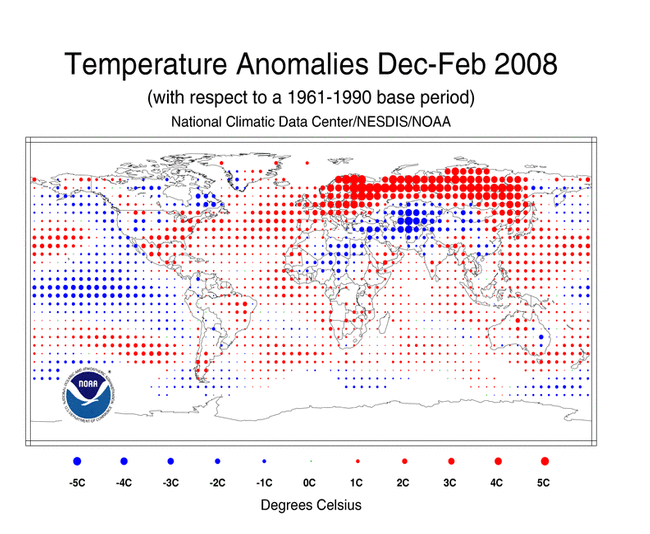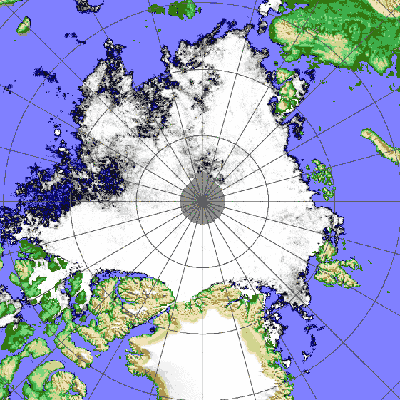 This year’s Arctic sea ice minimum is now officially the second lowest in the record according to the National Snow & Ice Data Center in the US. On August 26, the ice extent stood at 5.26m km2, dropping below 2005’s 5.32m km2. The melt season still has several weeks left to run, and there are now suggestions that this year’s final minimum could be close to – perhaps even beat – last year’s record.
This year’s Arctic sea ice minimum is now officially the second lowest in the record according to the National Snow & Ice Data Center in the US. On August 26, the ice extent stood at 5.26m km2, dropping below 2005’s 5.32m km2. The melt season still has several weeks left to run, and there are now suggestions that this year’s final minimum could be close to – perhaps even beat – last year’s record.
The NSIDC announcement has attracted a flurry of attention, and the media has been out trawling the usual suspects for quotes. The BBC reports:
Researchers say the Arctic is now at a climatic “tipping point”. “We could very well be in that quick slide downwards in terms of passing a tipping point,” said Mark Serreze, a senior scientist at the Colorado-based NSIDC. “It’s tipping now. We’re seeing it happen now,” he told the Associated Press news agency.
Adding to the interest, the European Space Agency released some interesting Envisat images of the state of the sea ice, and warned:
Following last summer’s record minimum ice cover in the Arctic, current observations from ESA’s Envisat satellite suggest that the extent of polar sea-ice may again shrink to a level very close to that of last year.
Meanwhile, Scientific American notes that the northwest passage is now open, and the Environment News Service does an admirable job of pulling all the info together – including recent work on possible rapid climate change around the Arctic. Earlier this month I was prepared to accept that I was going to lose my two bets on a new record minimum this year, so what’s been going on up north to change the outlook so dramatically?



